Media | Articles
When the future was luminous, transport vehicles had a Dustbuster silhouette
Station wagons went from butt of jokes to legit collector cars that fetch big bucks in modern society. I personally remember listening to people rant about the rear-facing seats in these modified family sedans, and I was one such detractor. As a kid, my first time in a minivan was filled with pure joy. No longer was my third-grade body stuffed into a tiny hole, as the minivan democratized the notion of a three-row seater—one that treated everyone with respect, while sipping fuel and effortlessly slipping inside your average garage.
The concept has such long legs that minivans now thrive as limousines in many parts of Asia. The rarified air of vehicles like the Buick GL8 prove that the minivan’s superior engineering and universal appeal is real. We should the love and respect GM’s GMT-199 platform, as it became a global brand ambassador for the Buick brand.
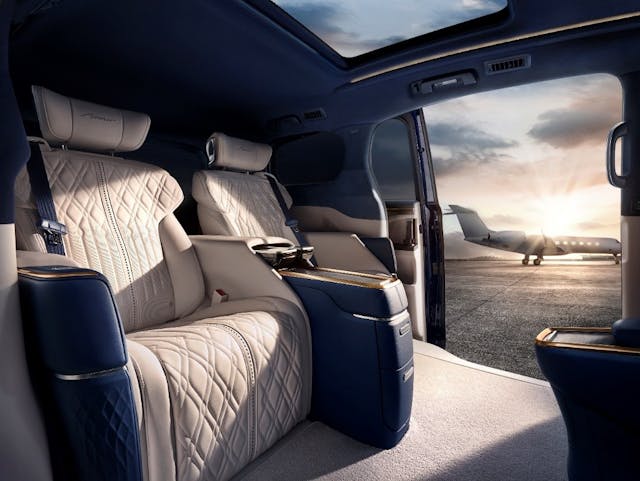
If anything, the minivan design allowed middle-row passengers a superior experience to front-seat occupants. To wit, how on earth can you deny the luxury available to center-row passengers in the latest GL8 from Buick? Station wagons lived in our hearts and minds for several decades, but the minivan’s tenure in the limelight was marred by the advent of car-based crossovers: reskinned minivans that destroyed their ergonomic space efficiency to replicate the success of the SUV. Which is a damn shame, because the most space-efficient vehicle deserves more than its current market share in these United States. Considering all the effort that went into their creation, minivans are ripe for a revival worthy of a woody wagon.
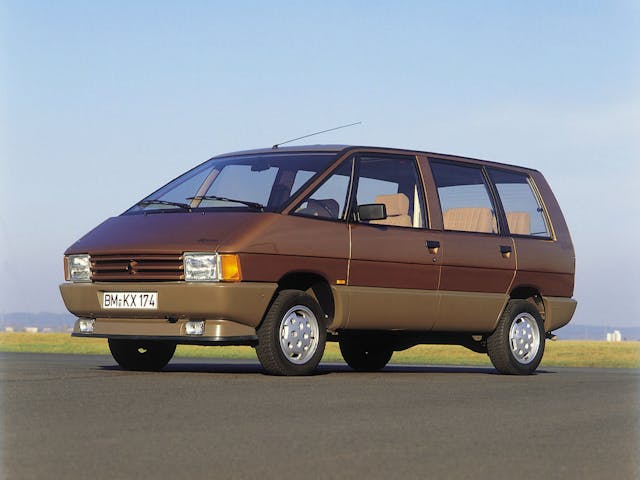
That said, we should probably give credit where it’s due: the Renault Espace took inspiration from the defunct Matra P18 and continues to sell in acceptable quantities to this day. Its front-engine, front-wheel-drive configuration mirrored the template of American interpretations. Sadly, the first yank-tank (i.e. Chrysler Minivan) was designed by the same folks that gave us the boring 1981 Dodge Aries K, so the advanced design was hidden by traditional notions of a large chrome grille, hood ornament, and a thoroughly normal A-pillar. Not so with General Motors, as it went full Espace (and partially Aerostar) when making the all-new Oldsmobile Silhouette, Pontiac Trans Sport, and Chevrolet Lumina APV for the 1990 model year. It was first seen in concept-vehicle form back in 1986, as a Pontiac Trans Sport styling exercise.
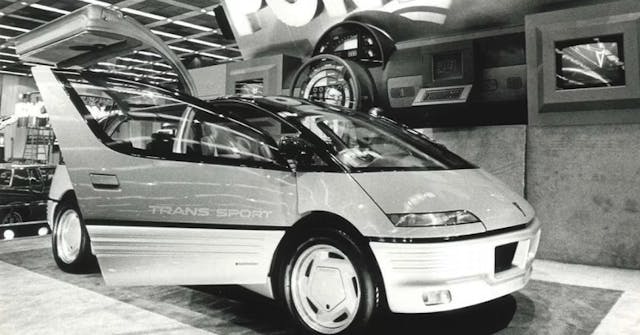
I propose that the first minivan to cross the threshold from rolling scrap to collectable artwork shouldn’t be the original Chrysler design, but rather all derivatives of the GMT-199, as they were the best design for hauling a large family on America’s high speed interstate system in comfort and bullet train-worthy style.
Marketplace
Buy and sell classics with confidence
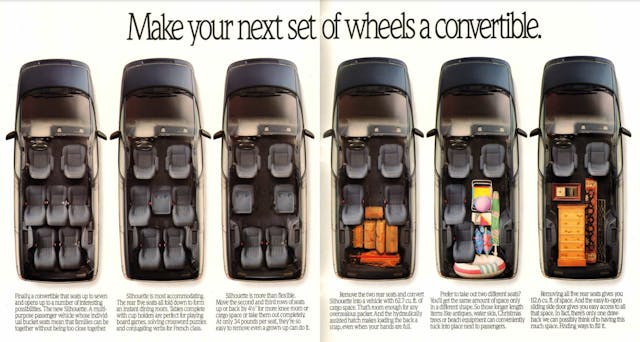
Even if the styling doesn’t set your heart aflutter, the number of interior configurations afforded by its unique seating modules were like nothing else on the market. Heck, the GMT-199’s long-term versatility is likely one reason why it is still a not uncommon sight in China.
Be it the Chevy, Pontiac, or Oldsmobile, the GMT-199 was the product of the same concept of the Renault Espace. Acres of flush-mount glass were mandatory, while the floating A-pillar provided a panoramic view forward. The GMT-199 sported a the bullet nose that extended the A-pillars’ dramatic slope downward into a modest bumper (a stark contrast to modern day SUVs that grow more upright with every product cycle). Unlike the French MPV, this design earned it the “Dustbuster” moniker: a sad comment considering just how much time and money GM’s prodigious R&D department burned to create a revolutionary minivan with plastic body panels hung on a spaceframe.
Perhaps its a moonshot, but there was commitment to the theme thanks to GM’s investment in the standalone Saturn brand. The engineering goes back to the Pontiac Fiero, but both were ironically hamstrung by the mediocre powertrain performance in early iterations. The vans had mandatory 3-speed automatics (in North America) with only 120 horses and throttle body fuel injection from GM’s 3.1-liter, 60-degree V6. Motorweek tested the first “Dustbuster” and 12.3 second runs to 60mph were acceptable, but will be concerning when carrying a full load of passengers and cargo. Not a dealbreaker by any means, only proof that perfection lies in future refinements: the sheer volume of functionality in both interior and exterior design cannot be overstated, and Motorweek did an admirable job promoting the whole package.
The fine folks at Motorweek tested the Dustbuster for model year 1992, when GM dropped-in the venerable 3.8-liter, 90-degree V-6 with port fuel injection and a four-speed automatic. The dash to 60 dropped to 9.6 seconds, but there was no fuel economy penalty in the testing. So not only do the GM Dustbusters prove that there’s no replacement for displacement, but there’s clearly no drawbacks when calling for a cubic upsizing?
While later versions of the GMT-199 platform (now called U-body) were wholly mediocre and ultimately unsatisfying to General Motors’ beancounters, at least one such example lived to see an aftermarket LS-4 swap. Rest assured, doing the same to a proper Dustbuster of GM’s original intent shall create the best minivan of all time. More to the point, LS-4 swap the original Oldsmobile Silhouette …
How could you go wrong with the Cadillac of Minivans after it receives a mid-2000s powertrain upgrade with LS4-FTW? The answer is obvious: There is no wrong that a V-8 restomod a Silhouette can right with the click of a button or a stomping of the accelerator.



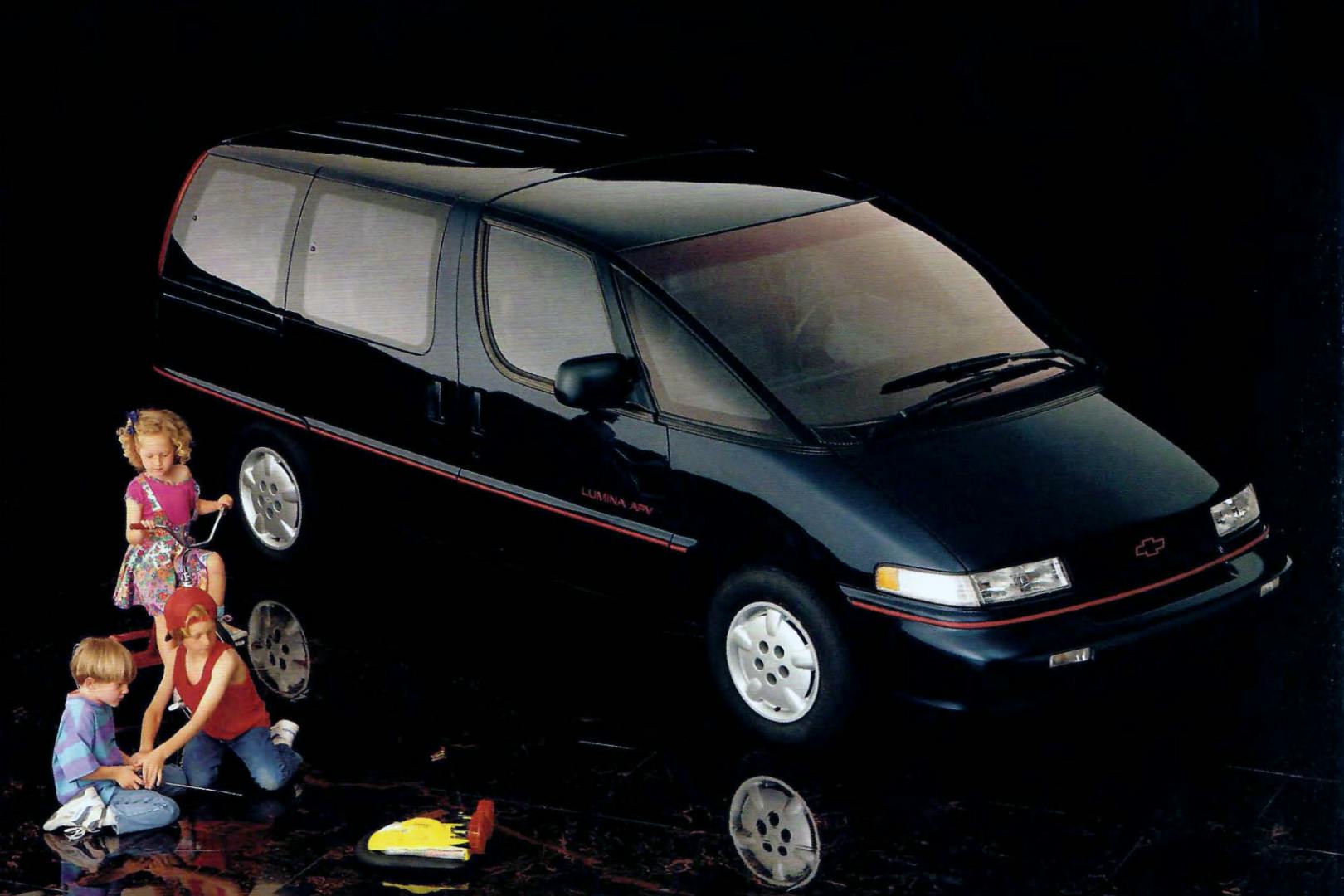
some nice lines on that concept version. Gull wing side door is super impractical on a minivan and such a concept car cliche.
These weren’t popular where I live. Not sure why (compared to any other minivan of the era).
My folks had the Lumina sedan.
Absolute complete worst pile of trash the ever rolled off the showroom floor.
The 3.1 V6 was trash. Pure trash. If it wasn’t dropping injectors, it was washing the walls and causing catastrophic oiling failure. No oil pressure gauge, just a light, and a minutes to exit.
My folks openly complained about how much worse it was than the G-body Buick before it.
Even the movie Get Shorty and all the leading actors couldn’t polish the turd that was Dustbuster vans. They were awful. Like riding on a buckboard at a pace no horse could match. The 3.8/3800 was the ONLY FWD V6 GM should have been building, but for far too long, if you wanted a Chevy, you couldn’t get it.
This era 1988-2000, people abandoned GM in droves because of trashy, garbage products.
Sorry, I refuse to wax nostalgic for 90s GM trash.
I agree. Every word. Even when they were new, there was a plasticky , junky feel to them. They looked like they were poorly built, and they were. I knew two different people who owned them and they both said that they had constant problems from the start. Both people (Who didn’t know each other), said they were done with General Motors all together. They felt like GM just ripped them off all the way around. Too bad.
Give me a 1995 Toyota Previa C/S. It was a mid-engine AWD supercharged minivan. It wasn’t a performance monster , but come on a forced inducted mid-engined awd minivan. What’s not to like about it.
In this thread, a bunch of people who have never owned one complaining about how bad they are lol. Sure they have typical cheap plastic interiors but these were every bit as good as the Chrysler vans in terms of reliablity. This was the tail end of GM being bonkers with their car design and I’m glad these slipped through the pipes before they started making bland appliances. I have a 1995 Silhouette and it’s honestly my favorite vehicle that I own. Quiet, comfy on the freeway, and plenty of power with the 3800 V6. Not to mention with the amount of compliments I get on the van, you’d think it was an exotic car. I love it!
>> the sheer volume of functionality in both interior and exterior design cannot be understated
That should be overstated, not understated. Hello?
You are right! Changing it now.
I personally hated when people called it a “Dustbuster” because to me, the Ford Aerostar looked a lot more like the Dustbuster appliance. The “All Plastic Van” (as I call it) looks far more like the anteater animal., which is what the Ford was often called. People, you had it backwards!
On a personal note, I did have a ’95 Pontiac version. Nice vehicle, though it probably would have sold better with a conventional windshield, as its replacement steel version proved. Still, the all plastic skin, I feel, was its greatest asset. The only steel showing was in the engine compartment and underneath chassis. Even the door jambs were plastic. Just the thing to have here in the Rustbelt (Ohio). And the removable seating was simply amazing and useful. Still regret selling it.
Recently bought a 92′ Lumina APV w/141k miles and I can honestly say that it might be the most interesting vehicle I’ve owned yet. Mine has the 3.1 60° V6, although it makes less power than the respected 3.8, I’d argue that they sound much better.